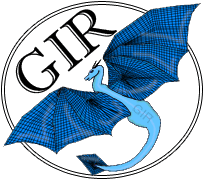


|
Introduction Components |
Backends: Information and InstallationIntroduction to Backends OGSA-DAI Service Backends OGSA-DAI services consist of a Data Resource Accessor and an Activity that can be performed. Presently, Multisearch Backends have an Activity that allows for searching through Lucene Indexes. However, if you are using a non-Lucene backend, or need to modify the analyzer for searching the Lucene backend, or want to change the XML of the result set being returned to the Multisearch client, you'll have to modify or add your own Activity and Data Resource Accessor. WSI 2.2 User Guide has help for developing Activities and Data Resource Accessors. It is recommended that you create the Data Resource Accessor before you make the Activity. Multisearch exceptions and message bundles are OGSA-DAI compliant so that they can be logged in meanful ways. If you are having issues or errors with Multisearch, the best way to handle it is to turn on the logging function associated with OGSA-DAI. More information can be found at How to Enable Logging. Axis Service backends Making Files Available for New Services Making files accessible on a server is not difficult. Before you index the files with Lucene (or any other indexer), you can place them so they can be found online. First, ensure Tomcat is installed and working. Then, move the folder with all of the data to $CATALINA_HOME/webapps/someName/. Edit the file $CATALINA_HOME/conf/server.xml and add the following line between the <Context path="/someName" debug="0" reloadable="false"></Context> This will allow anyone to load http://server.name:8080/someName and find all of your files. When the XML is returned to the Front-End client, the client can use the BaseURI of the server to generate a document location. It would be best, however, if you simply passed the entire URI of the file as the file location, as this will prevent errors in location. If, for some reason, this is not working for you, look at the code in SearchThread.java, under makeDocs() and in Document() in Document.java. If you don't host the files on a server and don't pass their contents over the wire in an XML file, you might want to provide a method of reading those files some other way, in case the user needs to check the contents of the file. Document Standards
Title: The title of the document, or "Untitled" Old rank and old score will be added, but all doucments only need the above. Customize Backends: OGSA-DAI To add an OGSA-DAI service, it's important to read-up on the following:
As an example, launching a backend on Snowy for Multisearch 2.0 or 3.0 is as simple as the following commands: (in the directory /home/mccormic/ogsadai with a username that has declared the Ddai containter at $CATALINA_HOME)
ant deployService -Ddai.service.name=service/name Contents of dai.prop.file Deploying resouces and services on OGSA-DAI can be found in detail at OGSA-DAI's website. Also, Multisearch 2.0 - Adding Backends's Adding New Backends has other information. Customize Backends: Axis Add a Backend to the Run
<service> The URL is the location of the backend. The name is the specific (and hopefully unique, although it is not required) name for the backend. The client class must be the full name of the class that can connect to the service given the URL and the query. (eg- edu.arsc.multisearch.client.Client) Each service should be in its own file in the directory of input. |

Arctic Region Supercomputing Center © Arctic Region Supercomputing Center 2006-2008. This page was last updated on 13 August 2008. |
|